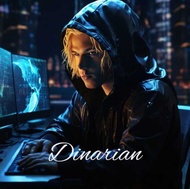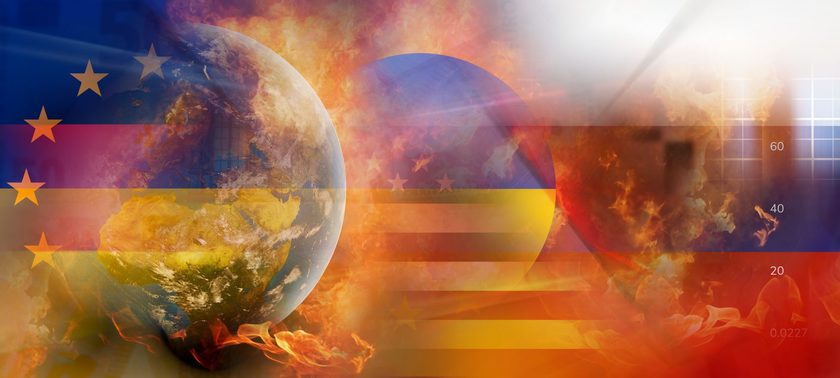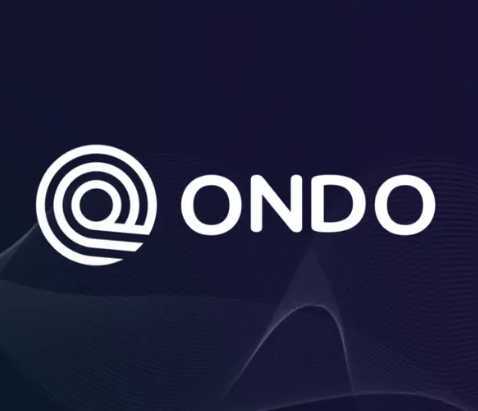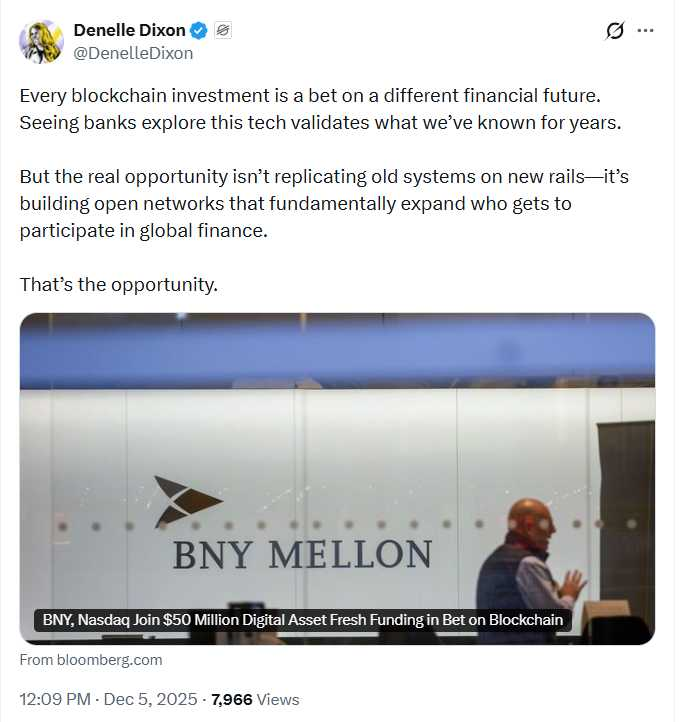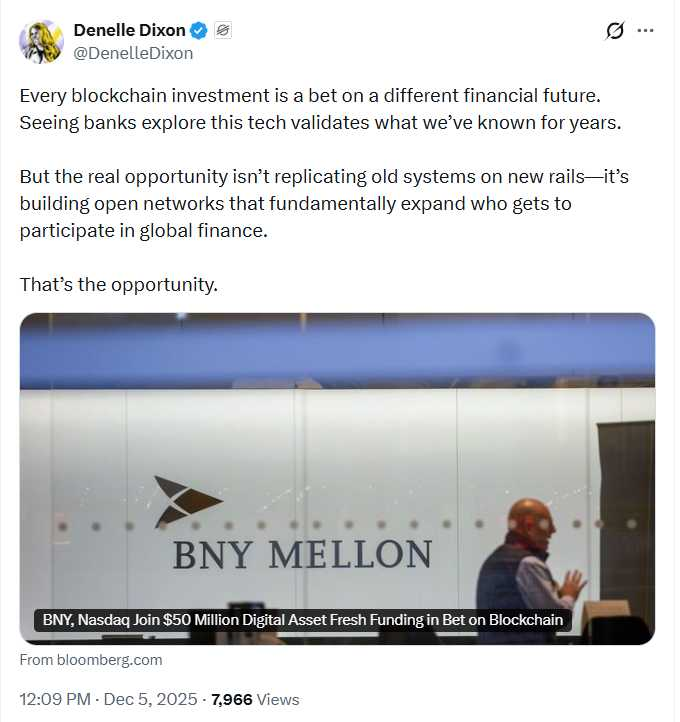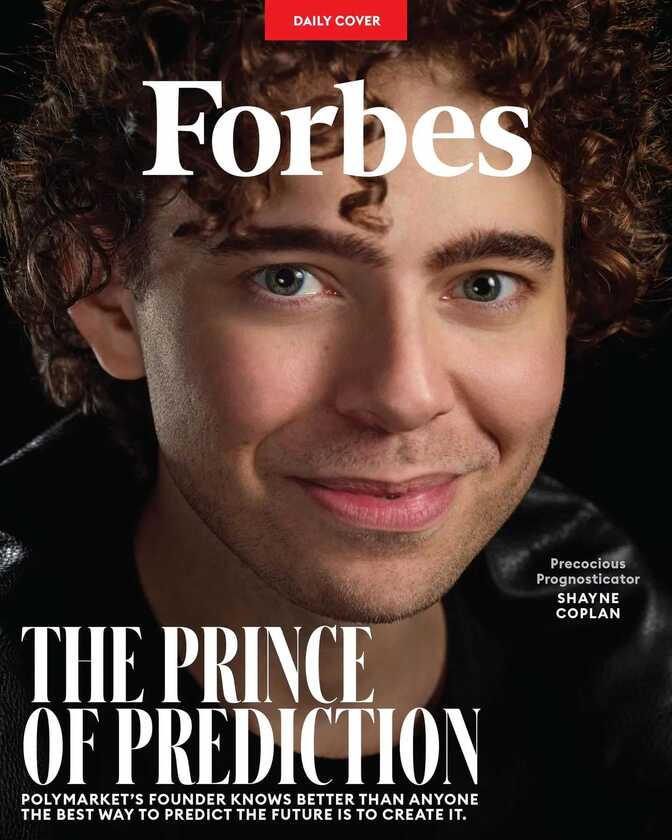Russia’s war with Ukraine is first and foremost a tragedy for the people of both countries, especially those who live—and die—in the battle zones. The priority for humanity, though apparently not for the political class, is to encourage Moscow and Kyiv to stop killing men, women and children and negotiate a peace deal.
Beyond the immediate confines of the conflict, the war is also seen by some as representative of an alleged clash between great powers and, perhaps, between civilisations. All wars are momentous, but the ramifications of Ukrainian war are already global.
Consequently, there is a perception that it is the focal point of a confrontation between two distinct models of global governance. The NATO-led alliance of the Western nations continues to push the unipolar, G7, international rules-based order (IRBO). It is opposed, some say, by the Russian and Chinese-led BRICS and the G20-based multipolar world order.
In this 3 part series we will explore these issues and consider if it is tenable to place our faith in the emerging multipolar world order.
There are very few redeeming features of the unipolar world order, that’s for sure. It is a system that overwhelmingly serves capital and few people other than a “parasite class” of stakeholder capitalist eugenicists. This has led many disaffected Westerners to invest their hopes in the promise of the multipolar world order:
Many have increasingly come to terms with the reality that today’s multipolar system led by Russia and China has premised itself upon the defense of international law and national sovereignty as outlined in the UN Charter. [. . .] Putin and Xi Jinping have [. . .] made their choice to stand for win-win cooperation over Hobbesian Zero Sum thinking. [. . .] [T]heir entire strategy is premised upon the UN Charter.
If only that were so! Unfortunately, it doesn’t appear to be the case. But even if it were true, Putin and Xi Jinping basing “their entire strategy” upon the UN Charter, would be cause for concern, not relief.
For the globalist forces that see nation-states as squares on the grand chessboard and that regard leaders like Putin, Biden and Xi Jinping as accomplices, the multipolar world order is manna from heaven. They have spent more than a century trying to centralise global power. The power of individual nation-states at least presents the possibility of some decentralisation. The multipolar world order finally ends all national sovereignty and delivers true global governance.
WORLD ORDER
We need to distinguish between the ideological concept of “world order” and the reality. This will help us identify where “world order” is an artificially imposed construct.
Authoritarian power, wielded over populations, territory and resources, restricted by physical and political geography, dictates the “world order.” The present order is largely the product of hard-nosed geopolitics, but it also reflects the various attempts to impose a global order.
The struggle to manage and mitigate the consequences of geopolitics is evident in the history of international relations. For nearly 500 years nation-states have sought to co-exist as sovereign entities. Numerous systems have been devised to seize control of what would otherwise be anarchy. It is very much to the detriment of humanity that anarchy has not been allowed to flourish.
In 1648, the two bilateral treaties that formed the Peace of Westphalia concluded the 30 Years War (or Wars). Those negotiated settlements arguably established the precept of the territorial sovereignty within the borders of the nation-state.
This reduced, but did not end, the centralised authoritarian power of the Holy Roman Empire (HRE). Britannica notes:
The Peace of Westphalia recognized the full territorial sovereignty of the member states of the empire.
This isn’t entirely accurate. That so-called “full territorial sovereignty” delineated regional power within Europe and the HRE, but full sovereignty wasn’t established.
The Westphalian treaties created hundreds of principalities that were formerly controlled by the central legislature of the HRE, the Diet. These new, effectively federalised principalities still paid taxes to the emperor and, crucially, religious observance remained a matter for the empire to decide. The treaties also consolidated the regional power of the Danish, Swedish, and French states but the Empire itself remained intact and dominant.
It is more accurate to say that the Peace of Westphalia somewhat curtailed the authoritarian power of the HRE and defined the physical borders of some nation states. During the 20th century, this led to the popular interpretation of the nation-state as a bulwark against international hegemonic power, despite that never having been entirely true.
Consequently, the so-called “Westphalian model” is largely based upon a myth. It represents an idealised version of the world order, suggesting how it could operate rather than describing how it does.

If nation-states really were sovereign and if their territorial integrity were genuinely respected, then the Westphalian world order would be pure anarchy. This is the ideal upon which the UN is supposedly founded because, contrary to another ubiquitous popular myth, anarchy does not mean “chaos.” Quite the opposite.
Anarchy is exemplified by Article 2.1 of the UN Charter:
The Organization is based on the principle of the sovereign equality of all its Members.
The word “anarchy” is an abstraction of the classical Greek “anarkhos,” meaning “rulerless.” This is derived from the privative prefix “an” (without) in conjunction with “arkhos” (leader or ruler). Literally translated, “anarchy” means “without rulers”—what the UN calls “sovereign equality.”
A Westphalian world order of sovereign nation-states, each observing the “equality” of all others while adhering to the non-aggression principle, is a system of global, political anarchy. Unfortunately, that is not the way the current UN “world order” functions, nor has there ever been any attempt to impose such an order. What a shame.
Within the League of Nations and subsequent UN system of practical “world order,”—a world order allegedly built upon the sovereignty of nations—equality exists in theory only. Through empire, colonialism, neocolonialism—that is, through economic, military, financial and monetary conquest, coupled with the debt obligations imposed upon targeted nations—global powers have always been able to dominate and control lesser ones.
National governments, if defined in purely political terms, have never been the only source of authority behind the efforts to construct world order. As revealed by Antony C. Sutton and others, private corporate power has aided national governments in shaping “world order.”
Neither Hitler’s rise to power nor the Bolshevik Revolution would have occurred as they did, if at all, without the guidance of the Wall Street financiers. The bankers’ global financial institutions and extensive international espionage networks were instrumental in shifting global political power.
These private-sector “partners” of government are the “stakeholders” we constantly hear about today. The most powerful among them are fully engaged in “the game” described by Zbigniew Brzezinski in The Grand Chessboard.
Brzezinski recognised that the continental landmass of Eurasia was the key to genuine global hegemony:
This huge, oddly shaped Eurasian chess board—extending from Lisbon to Vladivostok—provides the setting for “the game.” [. . .] [I]f the middle space rebuffs the West, becomes an assertive single entity [. . .] then America’s primacy in Eurasia shrinks dramatically. [. . .] That mega-continent is just too large, too populous, culturally too varied, and composed of too many historically ambitious and politically energetic states to be compliant toward even the most economically successful and politically pre-eminent global power. [. . .] Ukraine, a new and important space on the Eurasian chessboard, is a geopolitical pivot because its very existence as an independent country helps to transform Russia. Without Ukraine, Russia ceases to be a Eurasian empire. [. . .] [I]t would then become a predominantly Asian imperial state.
The “unipolar world order” favoured by the Western powers, often referred to as the “international rules-based order” or the “international rules-based system,” is another attempt to impose order. This “unipolar” model enables the US and its European partners to exploit the UN system to claim legitimacy for their games of empire. Through it, the transatlantic alliance has used its economic, military and financial power to try to establish global hegemony.
In 2016, Stewart Patrick, writing for the US Council on Foreign Relations (CFR), a foreign policy think tank, published World Order: What, Exactly, are the Rules? He described the post-WWII “international rules-based order” (IRBO):
What sets the post-1945 Western order apart is that it was shaped overwhelmingly by a single power [a unipolarity], the United States. Operating within the broader context of strategic bipolarity, it constructed, managed, and defended the regimes of the capitalist world economy. [. . .] In the trade sphere, the hegemon presses for liberalization and maintains an open market; in the monetary sphere, it supplies a freely convertible international currency, manages exchange rates, provides liquidity, and serves as a lender of last resort; and in the financial sphere, it serves as a source of international investment and development.
The idea that the aggressive market acquisition of crony capitalism somehow represents the “open markets” of the “capitalist world economy” is risible. It is about as far removed from free market capitalism as it is possible to be. Under crony capitalism, the US dollar, as the preferred global reserve currency, is not “freely convertible.” Exchange rates are manipulated and liquidity is debt for nearly everyone except the lender. “Investment and development” by the hegemon means more profits and control for the hegemon.
The notion that a political leader, or anyone for that matter, is entirely bad or good, is puerile. The same consideration can be given to nation-states, political systems or even models of world order. The character of a human being, a nation or a system of global governance is better judged by their or its totality of actions.
Whatever we consider to be the source of “good” and “evil,” it exists in all of us at either ends of a spectrum. Some people exhibit extreme levels of psychopathy, which can lead them to commit acts that are judged to be “evil.” But even Hitler, for example, showed physical courage, devotion, compassion for some, and other qualities we might consider “good.”
Nation-states and global governance structures, though immensely complex, are formed and led by people. They are influenced by a multitude of forces. Given the added complications of chance and unforeseen events, it is unrealistic to expect any form of “order” to be either entirely good or entirely bad.
That being said, if that “order” is iniquitous and causes appreciable harm to people, then it is important to identify to whom that “order” provides advantage. Their potential individual and collective guilt should be investigated.
This does not imply that those who benefit are automatically culpable, nor that they are “bad” or “evil,” though they may be, only that they have a conflict of interests in maintaining their “order” despite the harm it causes. Equally, where systemic harm is evident, it is irrational to absolve the actions of the people who lead and benefit from that system without first ruling out their possible guilt.
Since WWII, millions of innocents have been murdered by the US, its international allies and its corporate partners, all of whom have thrown their military, economic and financial weight around the world. The Western “parasite class” has sought to assert its IRBO by any means necessary— sanctions, debt slavery or outright slavery, physical, economic or psychological warfare. The grasping desire for more power and control has exposed the very worst of human nature. Repeatedly and ad nauseam.
Of course, resistance to this kind of global tyranny is understandable. The question is: Does imposition of the multipolar model offer anything different?

OLIGARCHY
Most recently, the “unipolar world order” has been embodied by the World Economic Forum’s inappropriately named Great Reset. It is so malignant and forbidding that some consider the emerging “multipolar world order” salvation. They have even heaped praise upon the likely leaders of the new multipolar world:
It is [. . .] strength of purpose and character that has defined Putin’s two decades in power. [. . .] Russia is committed to the process of finding solutions to all people benefiting from the future, not just a few thousand holier-than-thou oligarchs. [. . .] Together [Russia and China] told the WEF to stuff the Great Reset back into the hole in which it was conceived. [. . .] Putin told Klaus Schwab and the WEF that their entire idea of the Great Reset is not only doomed to failure but runs counter to everything modern leadership should be pursuing.
Sadly, it seems this hope is also misplaced.
While Putin did much to rid Russia of the CIA-run, Western-backed oligarchs who were systematically destroying the Russian Federation during the 1990s, they have subsequently been replaced by another band of oligarchs with closer links to the current Russian government. Something we will explore in Part 3.
Yes, it is certainly true that the Russian government, led by Putin and his power bloc, has improved the incomes and life opportunities for the majority of Russians. Putin’s government has also significantly reduced chronic poverty in Russia over the last two decades.
Wealth in Russia, measured as the market value of financial and non-financial assets, has remained concentrated in the hands of the top 1% of the population. This pooling of wealth among the top percentile is itself stratified and is overwhelmingly held by the top 1% of the 1%. For example, in 2017, 56% of Russian wealth was controlled by 1% of the population. The pseudopandemic of 2020–2022 particularly benefitted Russian billionnaires—as it did the billionaires of every other developed economy.
According to the Credit Suisse Global Wealth Report 2021, wealth inequality in Russia, measured using the Gini coefficient, was 87.8 in 2020. The only other major economy with a greater disparity between the wealthy and the rest of the population was Brazil. Just behind Brazil and Russia on the wealth inequality scale was the US, whose Gini coefficient stood at 85.
In terms of wealth concentration however, the situation in Russia was the worst by a considerable margin. In 2020 the top 1% owned 58.2% of Russia’s wealth. This was more than 8 percentage points higher than Brazil’s wealth concentration, and significantly worse than wealth concentration in the US, which stood at 35.2% in 2020.
Such disproportionate wealth distribution is conducive to creating and empowering oligarchs. But wealth alone doesn’t determine whether one is an oligarch. Wealth needs to be converted into political power for the term “oligarch” to be applicable. An oligarchy is defined as “a form of government in which supreme power is vested in a small exclusive class.”
Members of this dominant class are installed through a variety of mechanisms. The British establishment, and particularly its political class, is dominated by men and women who were educated at Eton, Roedean, Harrow and St. Pauls, etc. This “small exclusive class” arguably constitutes a British oligarchy. The UK’s new Prime Minister, Liz Truss, has been heralded by some because she is not a graduate of one of these select public schools.
Educational privilege aside, though, the use of the word “oligarch” in the West more commonly refers to an internationalist class of globalists whose individual wealth sets them apart and who use that wealth to influence policy decisions.
Bill Gates is a prime example of an oligarch. The former advisor to the UK Prime Minister, Dominic Cummings, said as much during his testimony to a parliamentary committee on May 2021 (go to 14:02:35). As Cummings put it, Bill Gates and “that kind of network” had directed the UK government’s response to the supposed COVID-19 pandemic.
Gates’ immense wealth has bought him direct access to political power beyond national borders. He has no public mandate in either the US or the UK. He is an oligarch—one of the more well known but far from the only one.
CFR member David Rothkopf described these people as a “Superclass” with the ability to “influence the lives of millions across borders on a regular basis.” They do this, he said, by using their globalist “networks.” Those networks, as described by Antony C. Sutton, Dominic Cummings and others, act as “the force multiplier in any kind of power structure.”
This “small exclusive class” use their wealth to control resources and thus policy. Political decisions, policy, court rulings and more are made at their behest. This point was highlighted in the joint letter sent by the Attorneys General (AGs) of 19 US states to BlackRock CEO Larry Fink.
The AGs observed that BlackRock was essentially using its investment strategy to pursue a political agenda:
The Senators elected by the citizens of this country determine which international agreements have the force of law, not BlackRock.
Their letter describes the theoretical model of representative democracy. Representative democracy is not a true democracy—which decentralises political power to the individual citizen—but is rather a system designed to centralise political control and authority. Inevitably, “representative democracy” leads to the consolidation of power in the hands of the so-called “Superclass” described by Rothkopf.
There is nothing “super” about them. They are ordinary people who have acquired wealth primarily through conquest, usury, market rigging, political manipulation and slavery. “Parasite class” is a more befitting description.
Not only do global investment firms like BlackRock, Vanguard and State Street use their immense resources to steer public policy, but their major shareholders include the very oligarchs who, via their contribution to various think tanks, create the global political agendas that determine policy in the first place. There is no space in this system of alleged “world order” for any genuine democratic oversight.
As we shall see in Part 3, the levers of control are exerted to achieve exactly the same effect in Russia and China. Both countries have a gaggle of oligarchs whose objectives are firmly aligned with the WEF’s Great Reset agenda. They too work with their national government “partners” to ensure that they all arrive at the “right” policy decisions.

THE UNITED NATIONS’ MODEL OF NATIONAL SOVEREIGNTY
Any bloc of nations that bids for dominance within the United Nations is seeking global hegemony. The UN enables global governance and centralises global political power and authority. In so doing, the UN empowers the international oligarchy.
As noted previously, Article 2 of the United Nations Charter declares that the UN is “based on the principle of the sovereign equality of all its Members.” The Charter then goes on to list the numerous ways in which nation-states are not equal. It also clarifies how they are all subservient to the UN Security Council.
Despite all the UN’s claims of lofty principles—respect for national sovereignty and for alleged human rights—Article 2 declares that no nation-state can receive any assistance from another as long as the UN Security Council is forcing that nation-state to comply with its edicts. Even non-member states must abide by the Charter, whether they like it or not, by decree of the United Nations.
The UN Charter is a paradox. Article 2.7 asserts that “nothing in the Charter” permits the UN to infringe the sovereignty of a nation-state—except when it does so through UN “enforcement measures.” The Charter states, apparently without reason, that all nation-states are “equal.” However, some nation-states are empowered by the Charter to be far more equal than others.
While the UN’s General Assembly is supposedly a decision-making forum comprised of “equal” sovereign nations, Article 11 affords the General Assembly only the power to discuss “the general principles of co-operation.” In other words, it has no power to make any significant decisions.
Article 12 dictates that the General Assembly can only resolve disputes if instructed to do so by the Security Council. The most important function of the UN, “the maintenance of international peace and security,” can only be dealt with by the Security Council. What the other members of the General Assembly think about the Security Council’s global “security” decisions is a practical irrelevance.
Article 23 lays out which nation-states form the Security Council:
The Security Council shall consist of fifteen Members of the United Nations. The Republic of China, France, the Union of Soviet Socialist Republics [Russian Federation], the United Kingdom of Great Britain and Northern Ireland, and the United States of America shall be permanent members of the Security Council. The General Assembly shall elect ten other Members of the United Nations to be non-permanent members of the Security Council. [. . .] The non-permanent members of the Security Council shall be elected for a term of two years.
The General Assembly is allowed to elect “non-permanent” members to the Security Council based upon criteria stipulated by the Security Council. Currently the “non-permanent” members are Albania, Brazil, Gabon, Ghana, India, Ireland, Kenya, Mexico, Norway and the United Arab Emirates.
Article 24 proclaims that the Security Council has “primary responsibility for the maintenance of international peace and security” and that all other nations agree that “the Security Council acts on their behalf.” The Security Council investigates and defines all alleged threats and recommends the procedures and adjustments for the supposed remedy. The Security Council dictates what further action, such as sanctions or the use of military force, shall be taken against any nation-state it considers to be a problem.
Article 27 decrees that at least 9 of the 15 member states must be in agreement for a Security Council resolution to be enforced. All of the 5 permanent members must concur, and each has the power of veto. Any Security Council member, including permanent members, shall be excluded from the vote or use of its veto if they are party to the dispute in question.
UN member states, by virtue of agreeing to the Charter, must provide armed forces at the Security Council’s request. In accordance with Article 47, military planning and operational objectives are the sole remit of the permanent Security Council members through their exclusive Military Staff Committee. If the permanent members are interested in the opinion of any other “sovereign” nation, they’ll ask it to provide one.
The inequality inherent in the Charter could not be clearer. Article 44 notes that “when the Security Council has decided to use force” its only consultative obligation to the wider UN is to discuss the use of another member state’s armed forces where the Security Council has ordered that nation to fight. For a country that is a current member of the Security Council, use of its armed forces by the Military Staff Committee is a prerequisite for Council membership.
The UN Secretary-General, identified as the “chief administrative officer” in the Charter, oversees the UN Secretariat. The Secretariat commissions, investigates and produces the reports that allegedly inform UN decision-making. The Secretariat staff members are appointed by the Secretary-General. The Secretary-General is “appointed by the General Assembly upon the recommendation of the Security Council.”
Under the UN Charter, then, the Security Council is made king. This arrangement affords the governments of its permanent members—China, France, Russia, the UK and the US—considerable additional authority. There is nothing egalitarian about the UN Charter.
The suggestion that the UN Charter constitutes a “defence” of “national sovereignty” is ridiculous. The UN Charter is the embodiment of the centralisation of global power and authority.

THE UNITED NATIONS’ GLOBAL PUBLIC-PRIVATE PARTNERSHIP
The UN was created, in no small measure, through the efforts of the private sector Rockefeller Foundation (RF). In particular, the RF’s comprehensive financial and operational support for the Economic, Financial and Transit Department (EFTD) of the League of Nations (LoN), and its considerable influence upon the United Nations Relief and Rehabilitation Administration (UNRRA), made the RF the key player in the transformation of the LoN into the UN.
The UN came into being as a result of public-private partnership. Since then, especially with regard to defence, financing, global health care and sustainable development, public-private partnerships have become dominant within the UN system. The UN is no longer an intergovernmental organisation, if it ever was one. It is a global collaboration between governments and a multinational infra-governmental network of private “stakeholders.”
In 1998, then-UN Secretary-General Kofi Annan told the World Economic Forum’s Davos symposium that a “quiet revolution” had occurred in the UN during the 1990s:
[T]he United Nations has been transformed since we last met here in Davos. The Organization has undergone a complete overhaul that I have described as a “quiet revolution”. [. . .] [W]e are in a stronger position to work with business and industry. [. . .] The business of the United Nations involves the businesses of the world. [. . .] We also promote private sector development and foreign direct investment. We help countries to join the international trading system and enact business-friendly legislation.
In 2005, the World Health Organisation (WHO), a specialised agency of the UN, published a report on the use of information and communication technology (ICT) in healthcare titled Connecting for Health. Speaking about how “stakeholders” could introduce ICT healthcare solutions globally, the WHO noted:
Governments can create an enabling environment, and invest in equity, access and innovation.
The 2015, Adis Ababa Action Agenda conference on “financing for development” clarified the nature of an “enabling environment.” National governments from 193 UN nation-states committed their respective populations to funding public-private partnerships for sustainable development by collectively agreeing to create “an enabling environment at all levels for sustainable development;” and “to further strengthen the framework to finance sustainable development.”
In 2017, UN General Assembly Resolution 70/224 (A/Res/70/224) compelled UN member states to implement “concrete policies” that “enable” sustainable development. A/Res/70/224 added that the UN:
[. . .] reaffirms the strong political commitment to address the challenge of financing and creating an enabling environment at all levels for sustainable development [—] particularly with regard to developing partnerships through the provision of greater opportunities to the private sector, non-governmental organizations and civil society in general.
In short, the “enabling environment” is a government, and therefore taxpayer, funding commitment to create markets for the private sector. Over the last few decades, successive Secretary-Generals have overseen the UN’s formal transition into a global public-private partnership (G3P).
Nation-states do not have sovereignty over public-private partnerships. Sustainable development formally relegates government to the role of an “enabling” partner within a global network comprised of multinational corporations, non-governmental organisations (NGOs), civil society organisations and other actors. The “other actors” are predominantly the philanthropic foundations of individual billionaires and immensely wealthy family dynasties—that is, oligarchs.
Effectively, then, the UN serves the interests of capital. Not only is it a mechanism for the centralisation of global political authority, it is committed to the development of global policy agendas that are “business-friendly.” That means Big Business-friendly. Such agendas may happen to coincide with the best interests of humanity, but where they don’t—which is largely the case—well, that’s just too bad for humanity.

GLOBAL GOVERNANCE
On the 4th February 2022, a little less then three weeks prior to Russia launching its “special military operation” in Ukraine, Presidents Vladimir Putin and Xi Jinping issued an important joint statement:
The sides [Russian Federation and Chinese People’s Republic] strongly support the development of international cooperation and exchanges [. . .], actively participating in the relevant global governance process, [. . .] to ensure sustainable global development. [. . .] The international community should actively engage in global governance[.] [. . .] The sides reaffirmed their intention to strengthen foreign policy coordination, pursue true multilateralism, strengthen cooperation on multilateral platforms, defend common interests, support the international and regional balance of power, and improve global governance. [. . .] The sides call on all States [. . .] to protect the United Nations-driven international architecture and the international law-based world order, seek genuine multipolarity with the United Nations and its Security Council playing a central and coordinating role, promote more democratic international relations, and ensure peace, stability and sustainable development across the world.
The United Nations Department of Economic and Social Affairs (UN-DESA) defined “global governance” in its 2014 publication Global Governance and the Global Rules For Development in the Post 2015 Era:
Global governance encompasses the totality of institutions, policies, norms, procedures and initiatives through which States and their citizens try to bring more predictability, stability and order to their responses to transnational challenges.
Global governance centralises control over the entire sphere of international relations. It inevitably erodes a nation’s ability to set foreign policy. As a theoretical protection against global instability, this isn’t necessarily a bad idea, but in practice it neither enhances nor “protects” national sovereignty.
Domination of the global governance system by one group of powerful nation-states represents possibly the most dangerous and destabilising force of all. It allows those nations to act with impunity, regardless of any pretensions about honouring alleged “international law.”
Global governance also significantly curtails the independence of a nation-state’s domestic policy. For example, the UN’s Sustainable Development Agenda 21, with the near-time Agenda 2030 serving as a waypoint, impacts nearly all national domestic policy—even setting the course for most domestic policy—in every country.
National electorates’ oversight of this “totality” of UN policies is weak to nonexistent. Global governance renders so-called “representative democracy” little more than a vacuous sound-bite.
As the UN is a global public-private partnership (UN-G3P), global governance allows the “multi-stakeholder partnership”—and therefore oligarchs—significant influence over member nation-states’ domestic and foreign policy. Set in this context, the UN-DESA report (see above) provides a frank appraisal of the true nature of UN-G3P global governance:
Current approaches to global governance and global rules have led to a greater shrinking of policy space for national Governments [. . . ]; this also impedes the reduction of inequalities within countries. [. . .] Global governance has become a domain with many different players including: multilateral organizations; [. . .] elite multilateral groupings such as the Group of Eight (G8) and the Group of Twenty (G20) [and] different coalitions relevant to specific policy subjects[.] [. . .] Also included are activities of the private sector (e.g., the Global Compact) non-governmental organizations (NGOs) and large philanthropic foundations (e.g., Bill and Melinda Gates Foundation, Turner Foundation) and associated global funds to address particular issues[.] [. . .] The representativeness, opportunities for participation, and transparency of many of the main actors are open to question. [. . .] NGOs [. . .] often have governance structures that are not subject to open and democratic accountability. The lack of representativeness, accountability and transparency of corporations is even more important as corporations have more power and are currently promoting multi-stakeholder governance with a leading role for the private sector. [. . .] Currently, it seems that the United Nations has not been able to provide direction in the solution of global governance problems—perhaps lacking appropriate resources or authority, or both. United Nations bodies, with the exception of the Security Council, cannot make binding decisions.
A/Res/73/254 declares that the UN Global Compact Office plays a vital role in “strengthening the capacity of the United Nations to partner strategically with the private sector.” It adds:
The 2030 Agenda for Sustainable Development acknowledges that the implementation of sustainable development will depend on the active engagement of both the public and private sectors[.]
While the Attorneys General of 19 states might rail against BlackRock for usurping the political authority of US senators, BlackRock is simply exercising its power as valued a “public-private partner” of the US government. Such is the nature of global governance. Given that this system has been constructed over the last 80 years, it’s a bit too late for 19 state AGs to complain about it now. What have they been doing for the last eight decades?
The governmental “partners” of the UN-G3P lack “authority” because the UN was created, largely by the Rockefellers, as a public-private partnership. The intergovernmental structure is the partner of the infra-governmental network of private stakeholders. In terms of resources, the power of the private sector “partners” dwarfs that of their government counterparts.
Corporate fiefdoms are not limited by national borders. BlackRock alone currently holds $8.5 trillion of assets under management. This is nearly five times the size of the total GDP of UN Security Council permanent member Russia and more than three times the GDP of the UK.
So-called sovereign countries are not sovereign over their own central banks nor are they “sovereign” over international financial institutions like the IMF, the New Development Bank (NDB), the World Bank or the Bank for International Settlements. The notion that any nation state or intergovernmental organisation is capable of bringing the global network of private capital to heel is farcical.
At the COP26 Conference in Glasgow in 2021, King Charles III—then Prince Charles—prepared the conference to endorse the forthcoming announcement of the Glasgow Financial Alliance for Net Zero (GFANZ). He made it abundantly clear who was in charge and, in keeping with UN objectives, clarified national governments role as “enabling partners”:
The scale and scope of the threat we face call for a global systems level solution based on radically transforming our current fossil fuel based economy. [. . .] So ladies and gentleman, my plea today is for countries to come together to create the environment that enables every sector of industry to take the action required. We know this will take trillions, not billions of dollars. [. . .] [W]e need a vast military style campaign to marshal the strength of the global private sector, with trillions at [its] disposal far beyond global GDP, and with the greatest respect, beyond even the governments of the world’s leaders. It offers the only real prospect of achieving fundamental economic transition.
Unless Putin and Xi Jinping intend to completely restructure the United Nations, including all of its institutions and specialised agencies, their objective of protecting “the United Nations-driven international architecture” appears to be nothing more than a bid to cement their status as the nominal leaders of the UN-G3P. As pointed out by UN-DESA, through the UN-G3P, that claim to political authority is extremely limited. Global corporations dominate and are currently further consolidating their global power through “multi-stakeholder governance.”
Whether unipolar or multipolar, the so-called “world order” is the system of global governance led by the private sector—the oligarchs. Nation-states, including Russia and China, have already agreed to follow global priorities determined at the global governance level. The question is not which model of the global public-private “world order” we should accept, but rather why we would ever accept any such “world order” at all.
This, then, is the context within which we can explore the alleged advantages of a “multipolar world order” led by China, Russia and increasingly India. Is it an attempt, as claimed by some, to reinvigorate the United Nations and create a more just and equitable system of global governance? Or is it merely the next phase in the construction of what many refer to as the “New World Order”?
